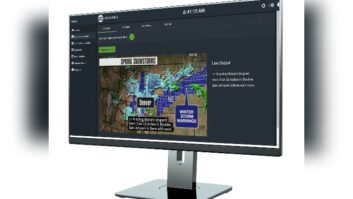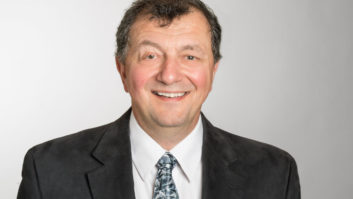
credit: iStockphoto Breaking news is, by its definition, unexpected. While a hurricane’s path can be predicted days ahead of time, the size and scope of the impact it will have is an unknown. An urgent news conference might have to be scheduled only hours in advance.
Other emergencies, like April’s Boston Marathon bombing, come without any warning.
Your newsroom has to respond to big, breaking stories. It’s a challenge for even the most experienced news directors to provide accurate, up-to-the minute coverage to listeners — sometimes for hours, days or weeks on end.
When the WBZ(AM) newsroom learned of the marathon bombing, News Director Peter Casey said, “the immediate goal was to get people down to the site, to where the people [were] fleeing, and to the hospital, because that’s where the stories [were] going to be.”
The problem was that the reporters who had been assigned to cover the elite race had already left to go file their stories, 50 minutes before the blast, and it was difficult to get journalists back to the scene, because people and traffic were being ushered away by police.
According to Casey, for listeners just tuning in, “You want them to know almost instantaneously what you’re covering [and] what has happened. Is there a danger to people in the area? … You’re thinking, ‘This is clearly a public safety issue.’”
Says Tim Scheld, director of news and programming for New York City’s WCBS(AM), “Our job is to be the eyes and the ears of the people listening to us.” He recalls when U.S. Airways Flight 1549 landed on the Hudson River in January 2009. The newsroom started getting phone calls about a plane on the river. However, “we had not seen it anywhere else. We had not heard it anywhere else, and the scanner chatter wasn’t really conclusive. But it became clear to us that something was going on.
“Our philosophy is to send everyone we can in from all directions,” says Scheld. Better to have too many people there than too few, just in case everyone is needed; you can always back off later.
With Flight 1549, there was a reporter a couple blocks away who was called in. It turned out that traffic cameras had a clear view of the plane. “We literally had a live picture from a camera, showing us a plane bobbing up and down in the Hudson River,” Scheld recalls.

Mike McMearty
Credit: Courtesy WTOP(FM) The reporter was on air describing the situation — “the equivalent to having our helicopter over it.”
Covering the story quickly is important, but so is getting it right.
Reporters “don’t have much access to officials. You’re witnessing what’s going on,” says Casey. “What you’re seeing is accurate and immediate.”
At the same time, he says, “You have to use your own experience and judgment not to be too hasty to jump on things … There’s an adrenaline rush during these types of situations — to do as much as we can to put out as much information as you can. But there has to be a check and a balance.”
In order to keep control over what’s going on air, Casey says, he has reporters work from scripts rather than ad-lib, whenever possible.
ACCURATE BETTER THAN FIRST
Two days after the Boston bombing, the Associated Press, Fox News and CNN were among organizations that wound up having to issue retractions for having incorrectly reported key information. At WCBS, Scheld says, “We were going on the air and being very honest. We were saying the AP said that here is a person in custody … but not only can CBS News not confirm that, CBS News has sources that say it’s just not true.”
He adds, “Nobody wants to hear it first if it’s wrong.”
For this reason, News Director Mike McMearty at Washington’s WTOP(FM) says their newsroom philosophy is to “First get it right, then get it first,” which he credits to the station’s Vice President of News and Programming Jim Farley.
“It almost sounds like a contradiction,” McMearty says. “You don’t get to the second part unless you get it right.”
Social media users came under criticism during the Boston manhunt, too — for posting and tweeting raw, uncorroborated information from police scanners. Casey points out scanners have been in newsrooms for decades. “It provides you with that good base of information of where there’s activity that might be worth investigating.” However, he strongly cautions that the scanner only tells you what police are going to investigate, not what has actually happened. “It’s not a source by itself.”
With the Beltway sniper attacks in the Washington area in 2002, county police asked the press not to report where they had set up roadblocks. “We had to think about another way to do this,” says McMearty. “We could report that there are delays on I-95 where the police are looking for suspects, without tipping off exactly where the blockades are.” Public safety comes first.
KEEP UP MORALE
An important breaking story can last hours, days or, as in the case of the Beltway sniper, even weeks. When a news team is in it for the long haul, it becomes a priority to keep the staff going strong.
This might seem obvious, but Casey advises to “keep (reporters) fed,” then to “think about who’s been on the air how long. What shift is coming next?”

Tim Scheld
Credit: Courtesy WCBS(AM) When the manhunt for the second suspect closed in on Watertown, Mass., four days after the marathon bombing, WBZ had reporters inside the police perimeter. “They were either going to be sleeping in their cars, or not sleeping all night long,” Casey says. “We could not get relief staff inside that perimeter.”
Around 1 a.m., the station finally was able to bring in relief, but the situation reinforced the need for basic preparedness. “Every reporter should always pack a bag of clothes. You’re going to need something to eat, and something to drink,” says Casey. “They should have an emergency bag in the car, [because] you never know where you’re going to be.”
“When the sniper attack happened, it was a hellish three weeks,” McMearty recalls. “We did stories we never thought we’d do, such as about how to avoid the sniper.”
After Sept. 11, 2001, the station made a psychologist available to the staff. WTOP also brought in a voice coach to help on-air staff learn how to care for and control their voices, and to recognize how they sound.
McMearty recommends paying attention to how reporters sound on air, especially the tone: “Bring it down a notch.”
After all, during emergencies, “people are hanging on the words we’re saying. How we say it is important.”
“It’s very seat-of-the-pants in our business. There is no manual that you sit and open up and say how you do this,” says Scheld. At WCBS, “We do know every day that we can do things better than we did today.”
He emphasizes that reporting breaking news is a team effort, which is why it’s extra important to trust your staff.
A news director, according to McMearty, has to be all things — “a go-between, hand-holder, cheerleader and constructive critic all on the fly.”
According to Casey, during any crisis, a station’s role is to be a “utility,” so that the listener “can turn on that flow of information and not have it stop.”
Paul Riismandel is a 20-year veteran of community and college radio. He is co-founder and technology editor ofRadioSurvivor.com.












